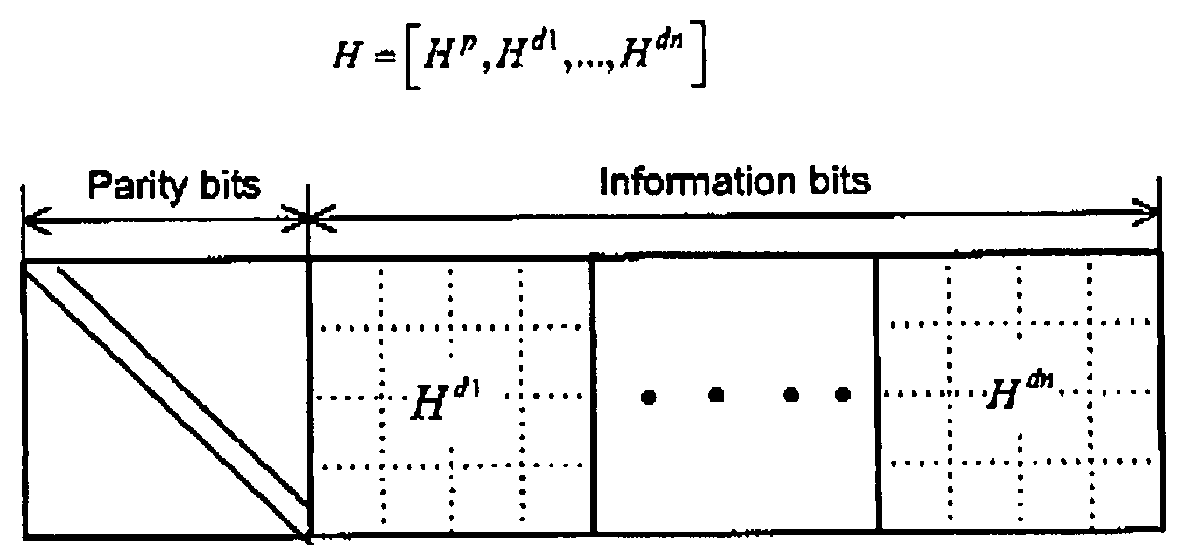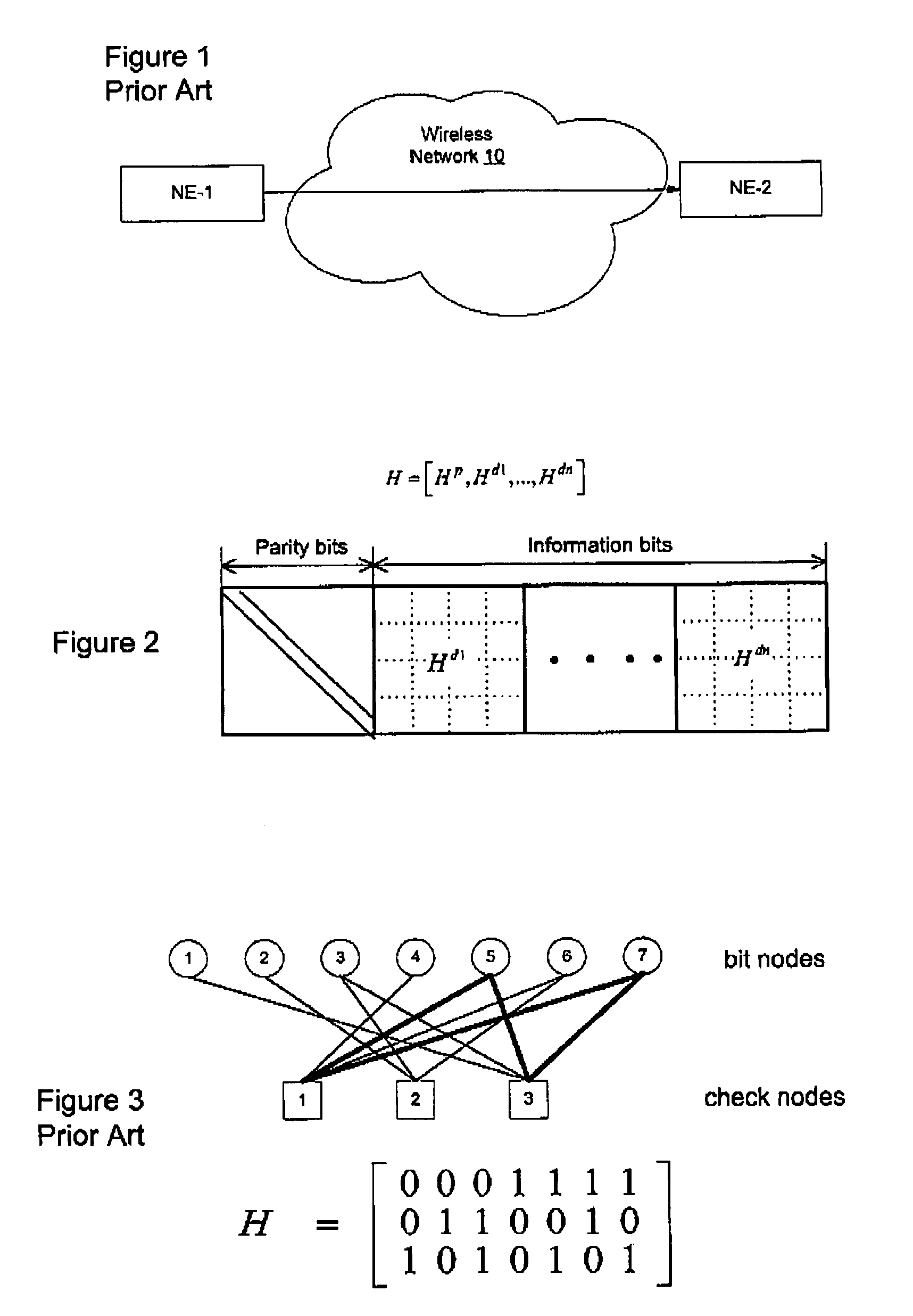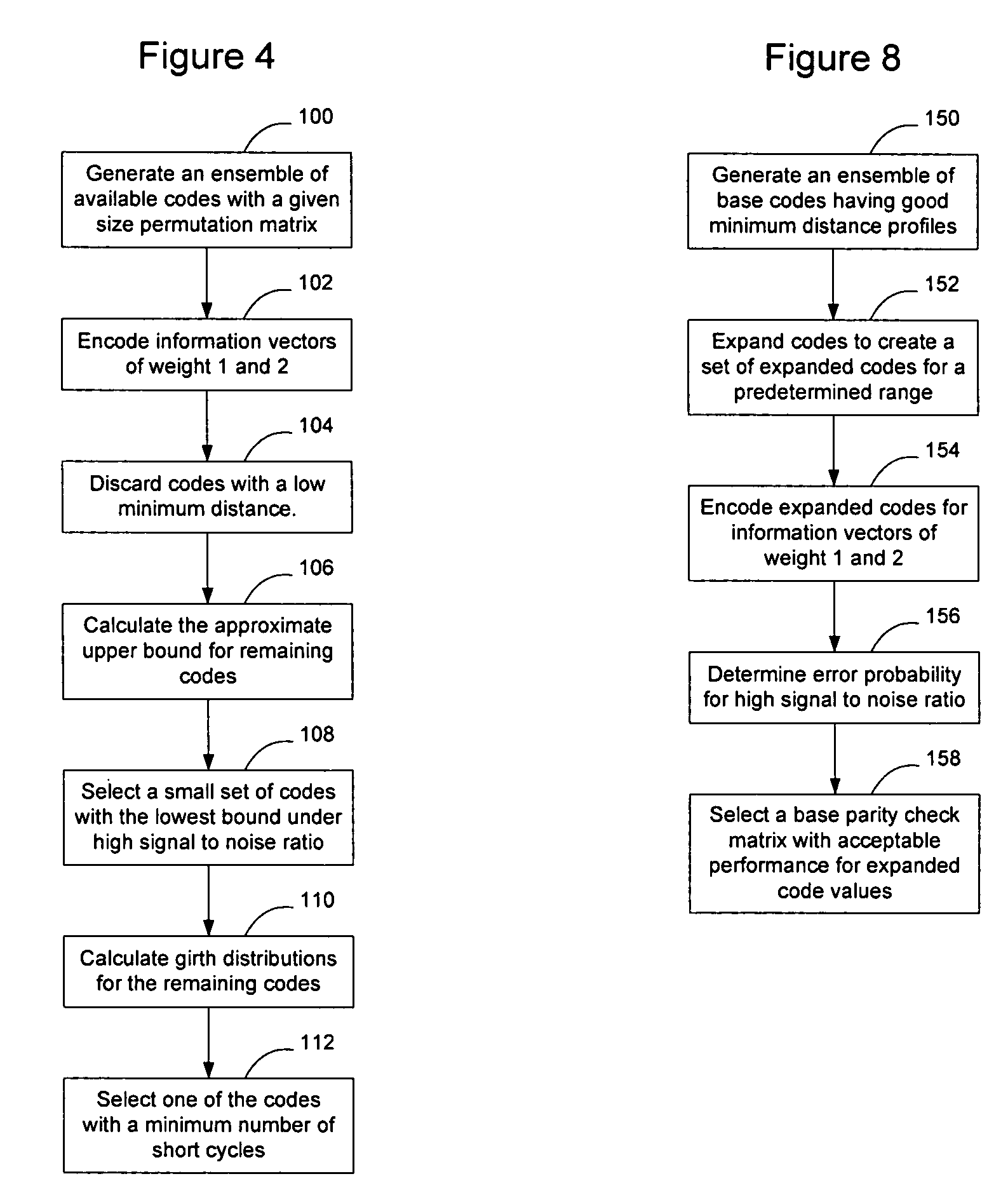Algebraic low-density parity check code design for variable block sizes and code rates
a low-density parity, code-design technology, applied in the field of communication networks, can solve the problems of code design that implements forward error correction with varying degrees of complexity and effectiveness, data transmission may occasionally, or frequently, encounter bit errors, etc., and achieves easy expansion, high code rate parity, and easy implementation in hardware
- Summary
- Abstract
- Description
- Claims
- Application Information
AI Technical Summary
Benefits of technology
Problems solved by technology
Method used
Image
Examples
Embodiment Construction
[0024]The following detailed description sets forth numerous specific details to provide a thorough understanding of the invention. However, those skilled in the art will appreciate that the invention may be practiced without these specific details. In other instances, well-known methods, procedures, components, protocols, algorithms, and circuits have not been described in detail so as not to obscure the invention.
[0025]According to an embodiment of the invention, the π-rotation parity check codes are used as a basis for creating higher rate codes that retain the algebraic nature of the π-rotation parity check codes. This allows the new codes to be readily implemented in hardware because of the algebraic nature of their design.
[0026]The π-rotation technique is described in detail in a paper by R. Echart, “The π-Rotation Low-Density Parity Check Codes,” Proc. GLOBECIM 2001, pp. 980-984, November 2001, the content of which is hereby incorporated herein by reference. In the π-rotation...
PUM
 Login to View More
Login to View More Abstract
Description
Claims
Application Information
 Login to View More
Login to View More - R&D
- Intellectual Property
- Life Sciences
- Materials
- Tech Scout
- Unparalleled Data Quality
- Higher Quality Content
- 60% Fewer Hallucinations
Browse by: Latest US Patents, China's latest patents, Technical Efficacy Thesaurus, Application Domain, Technology Topic, Popular Technical Reports.
© 2025 PatSnap. All rights reserved.Legal|Privacy policy|Modern Slavery Act Transparency Statement|Sitemap|About US| Contact US: help@patsnap.com



